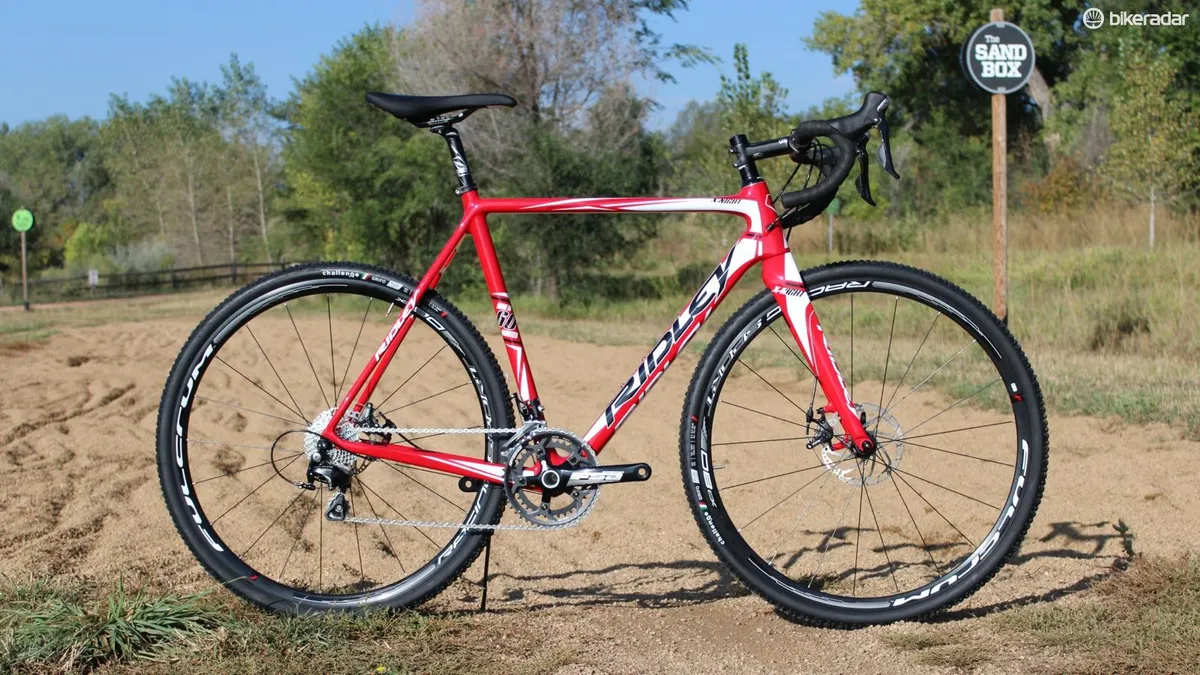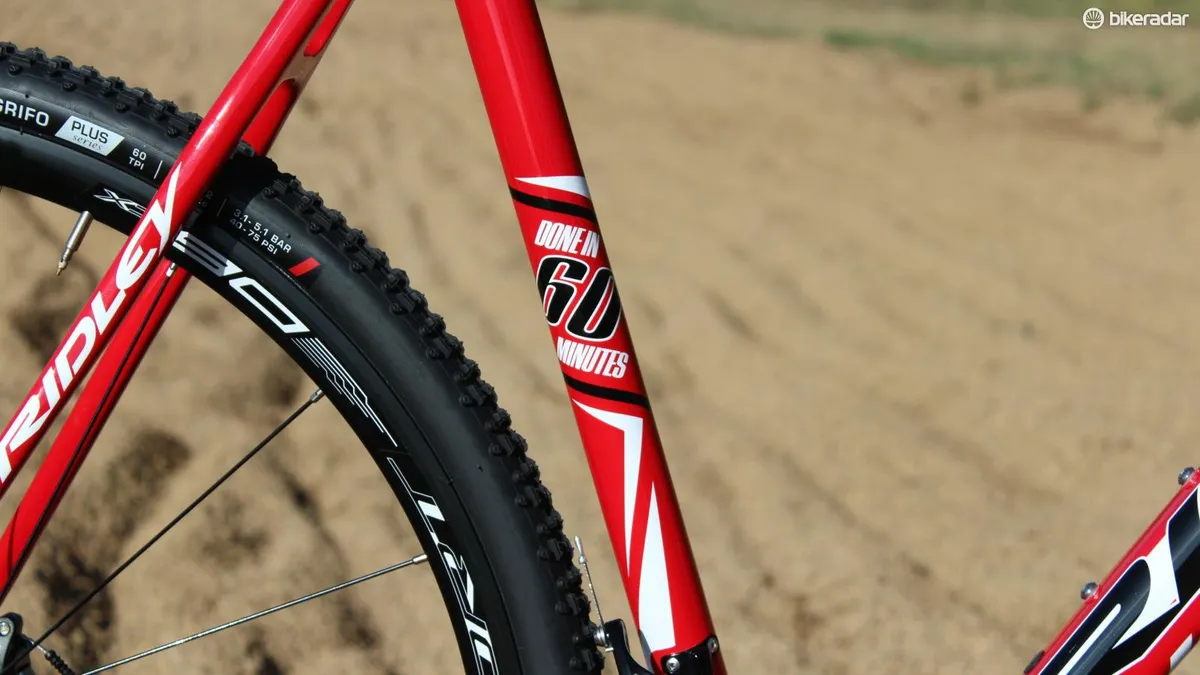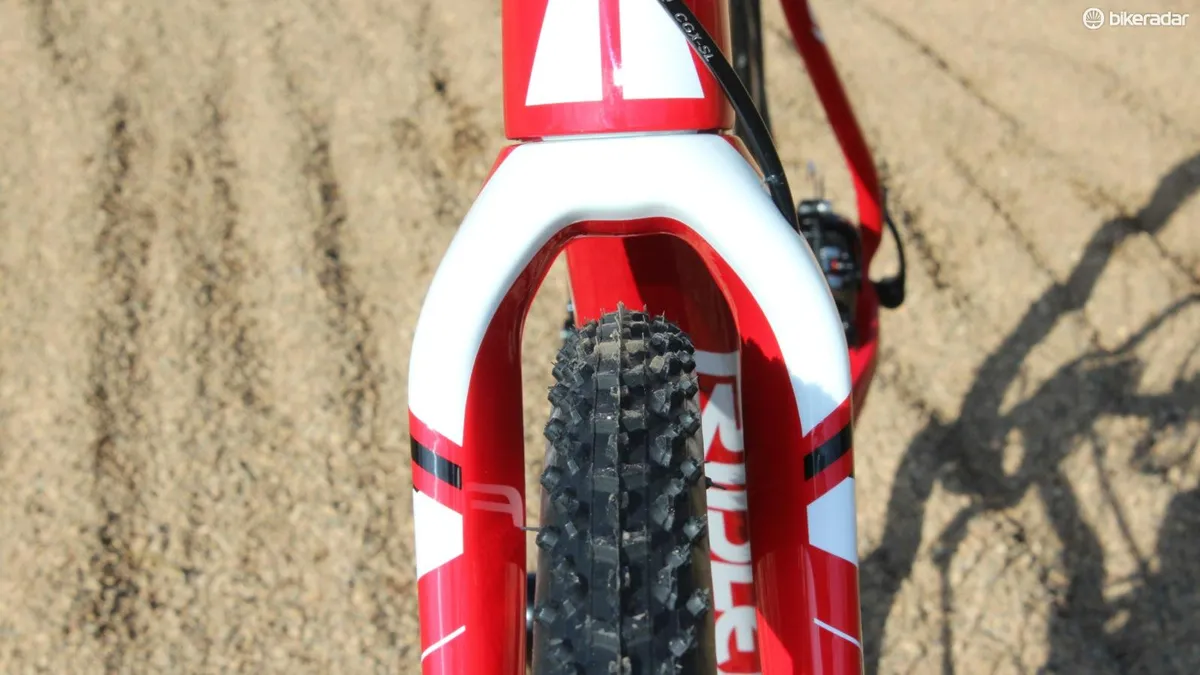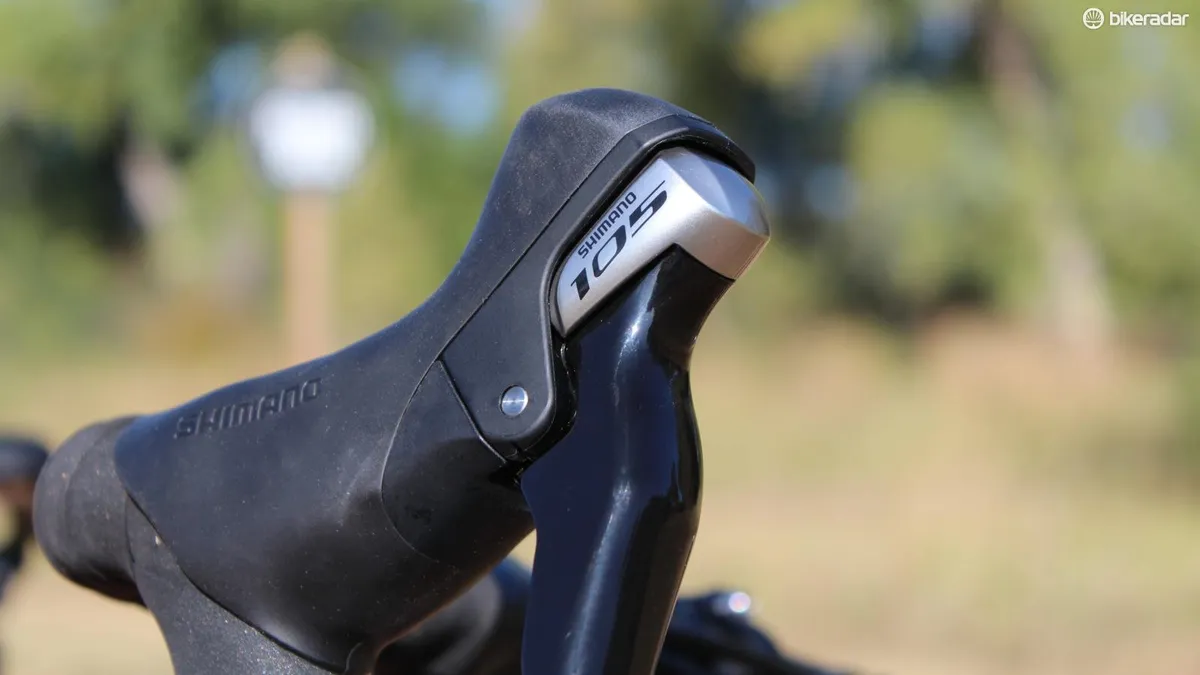Looking at recent world championship podiums, it's hard to fault Ridley; the bikes have delivered medals by the truckload. Of course, that has more to do with the often Belgian-made engines than the Belgian-made bikes.
Nonetheless, Ridley ’cross machines reflect decades of racing in the sport's motherland. The end result makes for an interesting proposition for amateur riders: the frames ride high at the bottom bracket and top tube, very short on the front end (think: toe overlap, even on big bikes), and slammed up front.
Different strokes…
Whether all this adds up to a good or a bad bike for you depends on your preferences.
First, let's quantify the funky geometry a bit. Compared with a semi-compact frame, such as a Specialized Crux or a Giant TCX Advanced Pro, the X-Night has an enormous seat tube, which runs way up above the horizontal top tube. Measured from the bottom bracket to the collar, a 56cm frame has a 60cm seat tube, for instance.
Related: The best cyclocross bikes (US / Aus) / The best cyclocross bikes (UK)
For ’cross, the high and horizontal top tube is a great thing, giving you an even and easily reachable perch for your hand during flying dismounts, and opening up the front triangle nicely for shouldering the bike.
Measured on its own, the head tube is pretty standard, at 160mm for a 56cm frame. But since the bottom bracket rides relatively high (64mm drop compared with the Trek Boone's 68mm), the bike is effectively shorter at the front end. More noticeable is how tight the front wheel sits, with the front hub about 2cm closer to the bottom bracket than other bikes of comparable size.
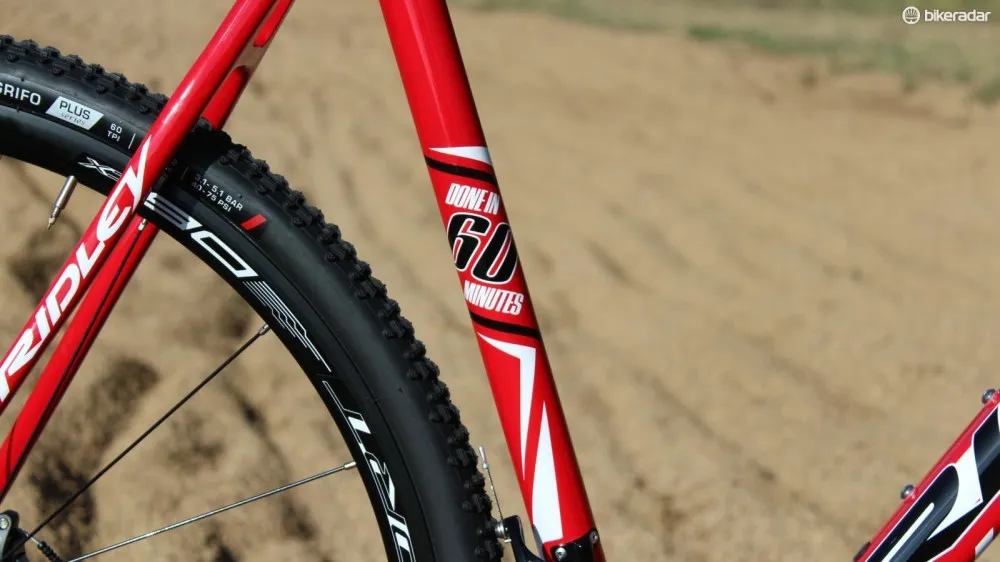
Your results may vary. Also, note the absence of bottle-cage bosses – this is an out-and-out race bike, kids
Proponents of the geometry find it nimble, especially in close quarters like slow-speed 180s. Other might find it slightly less stable at speed than a longer and lower bike. Being a bit of a nervous roadie, I fall more into the latter camp.
However you feel about the bike getting through corners, there is no mistaking its willingness to sprint back up to speed coming out of them. Beefy chainstays keep the drivetrain firmly in line, directing all your power straight back to the cassette.
Solid but unspectacular spec
This was one of seven bikes we selected for our Best Cyclocross Bikes feature, with the upper cap being roughly $3,000 / £2,500. While many companies offer a bike right at this price with hydraulic Shimano 105 brakes, Ridley does not. Your options are a pricier Ultegra hydraulic bike or this much cheaper version with TRP mechanical discs.
Mechanical discs offer about 60 percent of the performance of hydraulics at about 60 percent of the price. They are still a vast leap forward from cantilever brakes, providing good power and modulation regardless of the weather.
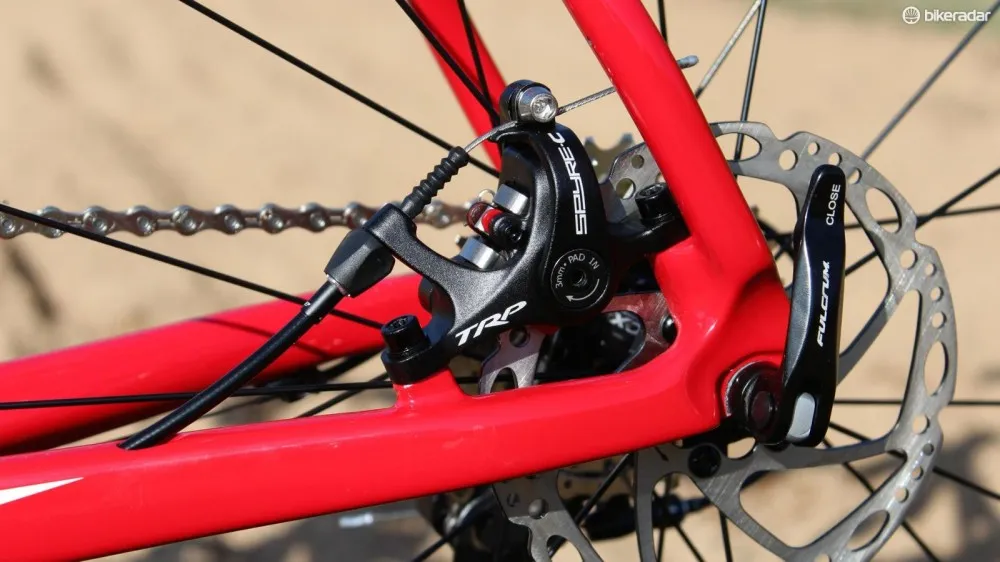
Mechanical disc brakes offer about 60 percent of the performance and cost of hydraulic brakes, but are still leaps ahead of cantilevers (as in, these actually stop you)
The Shimano 105 drivetrain is solid. You'll find this stalwart mechanical group on most bikes at this price, and for good reason: the dependable performance mimics that of its high-end Ultegra brethren, accepting a bit of weight for a great break in price. With the 11-28 cassette paired with the ’cross-standard 46/36 rings on an FSA Gossamer crank, the 105 derailleurs dutifully move the chain without hiccups or fuss.
Ridley uses its house brand 4ZA for the bars, stem, seatpost and saddle, the latter of which feels overly padded for my taste. The alloy cockpit is unremarkable and adequate.
The Fulcrum Racing Sport DB CX clincher wheels come dressed in toothy Challenge Grifo Plus rubber. Bike companies often skimp on wheel quality for bikes of this price, but these are fairly decent, with the robust rims keeping the wheels in true despite abuse. The bummer, however, is that clinchers do not make very good race wheels, and the non-tubeless-ready rims don't encourage ghetto tubeless attempts with their asymmetric spoke beds. I enjoyed the substantial bite of the Grifo Plus tread (again, being a bit of a nervous roadie, I feel that more traction is almost always better).
Based on Ridley's advice, I sized down from my normal 56cm to a 54cm for the X-Night. The bike here has my normal 76cm saddle height, and you can see that there still isn't much seatpost showing (but there are plenty of spacers up front). Which brings us to the aethetics of the thing; if you want the bike of Belgium, you are in for the full experience, from the world-championship pedigree to the geometry of the land of frites and mayo.
